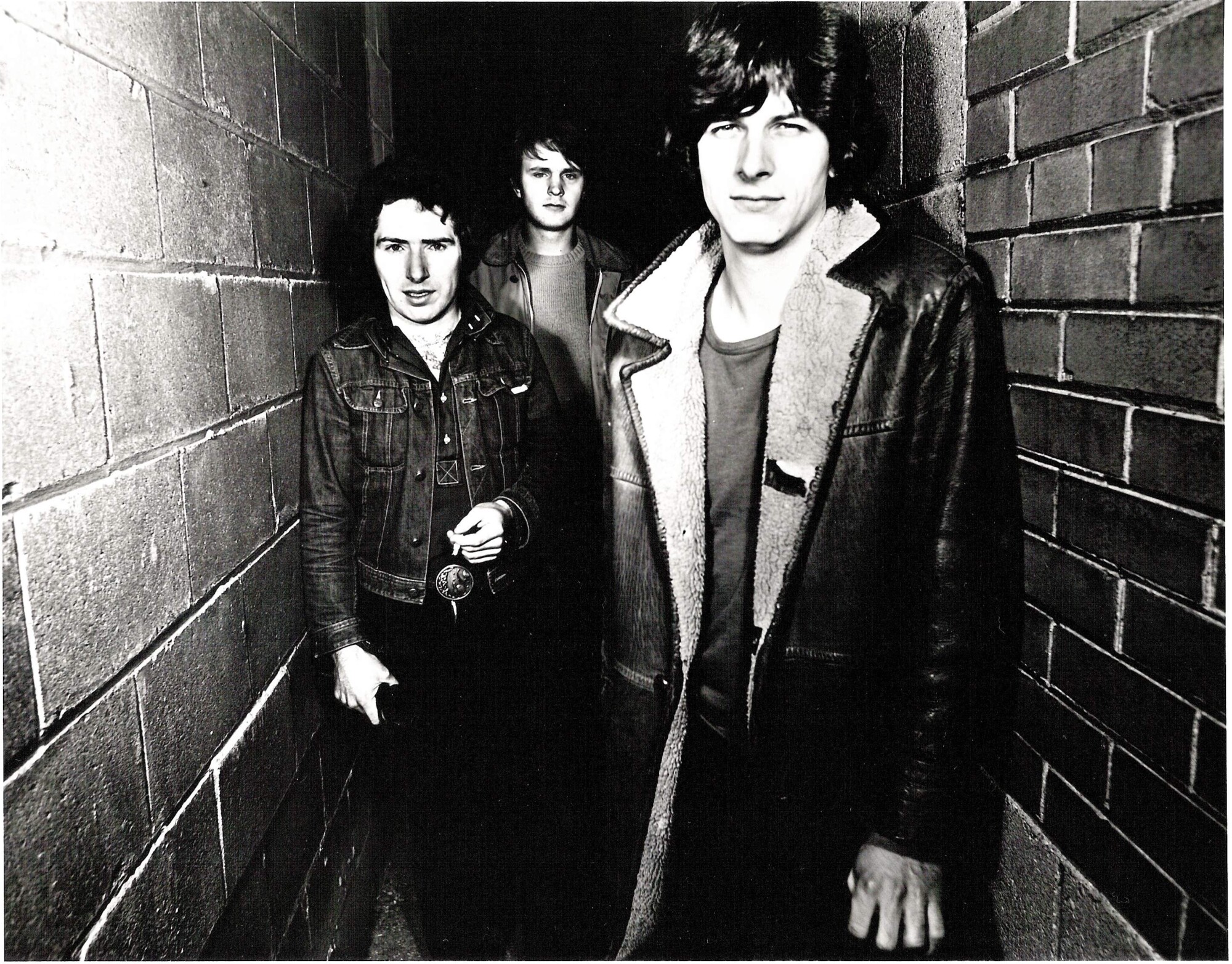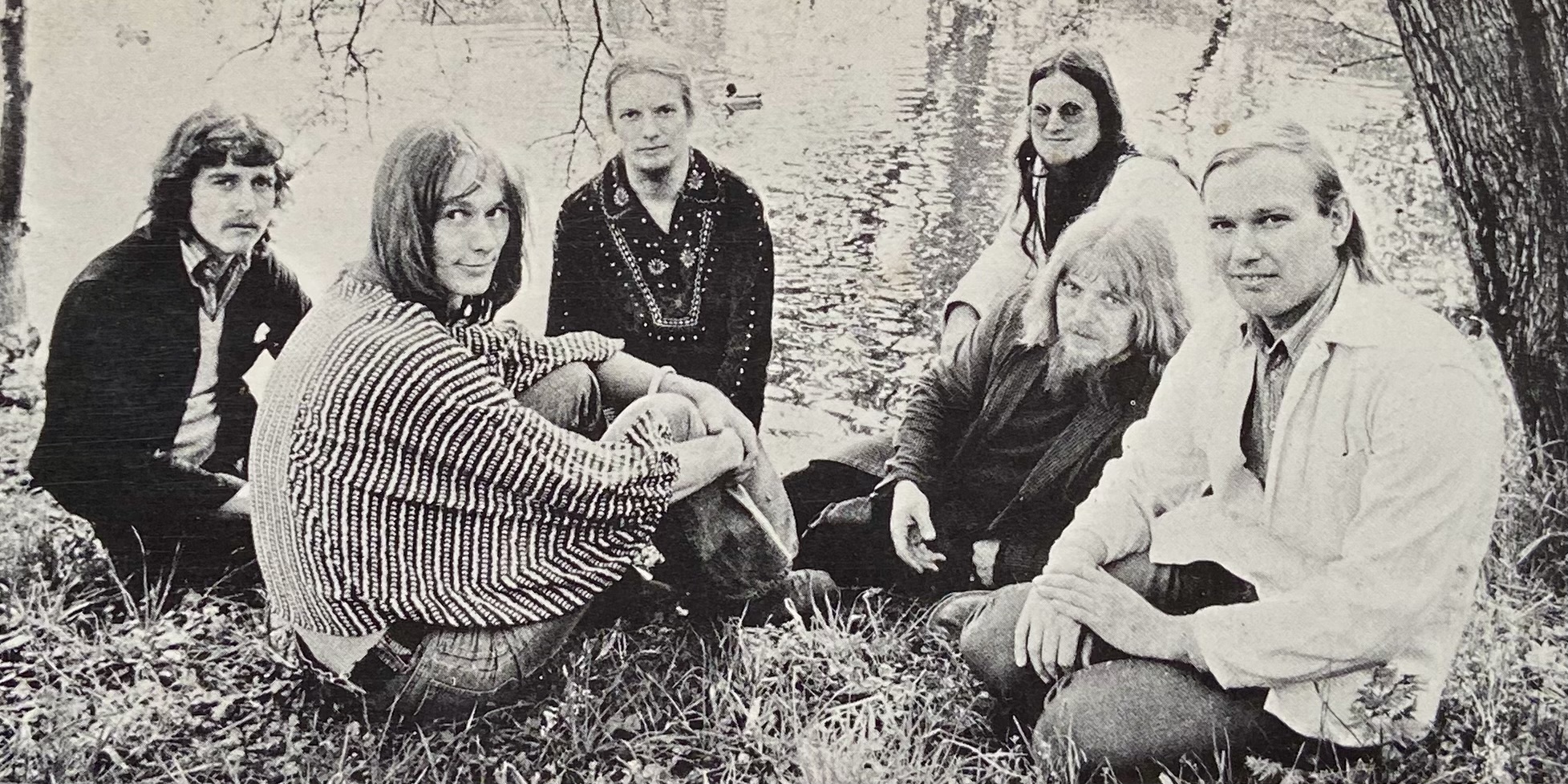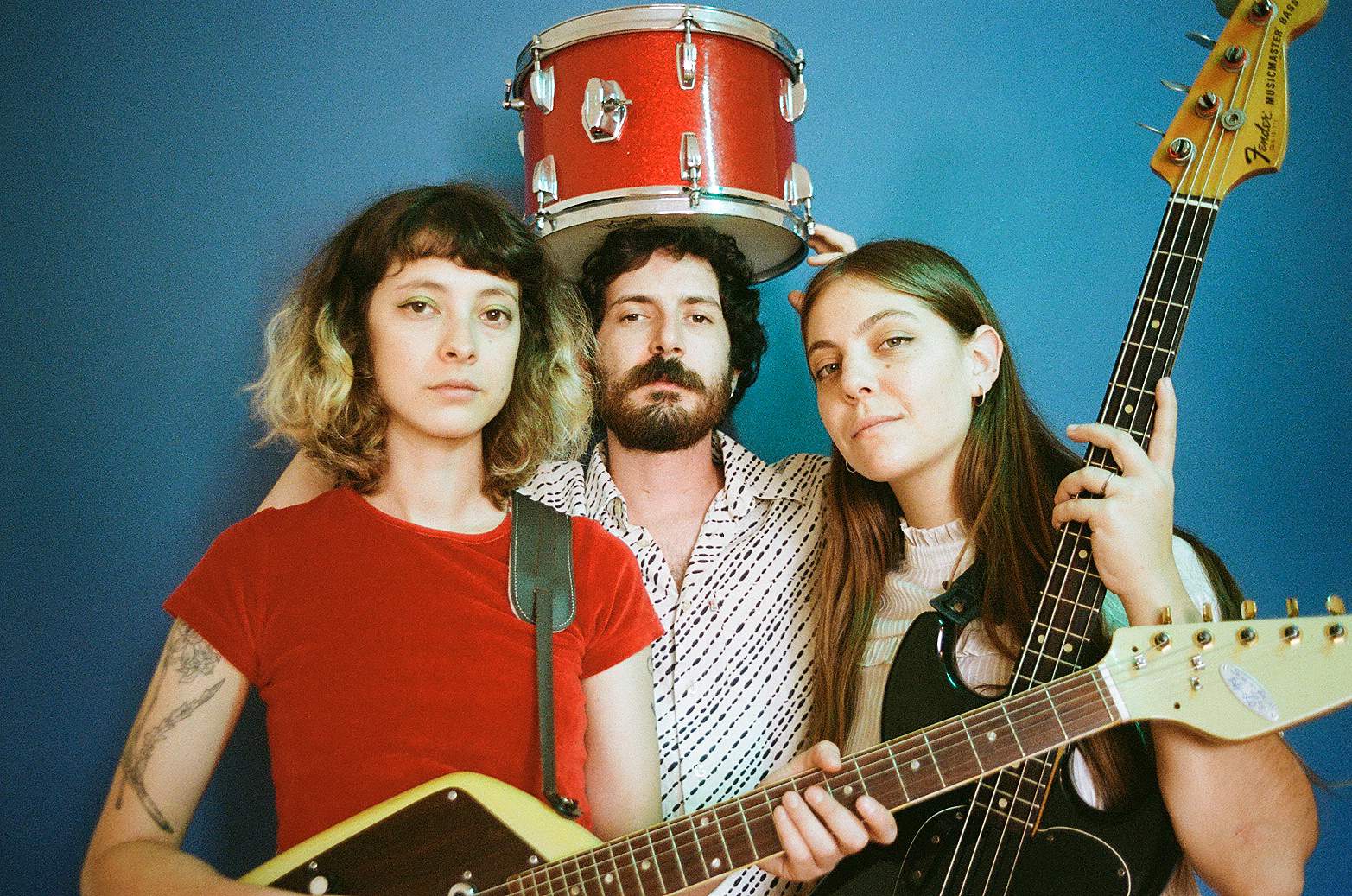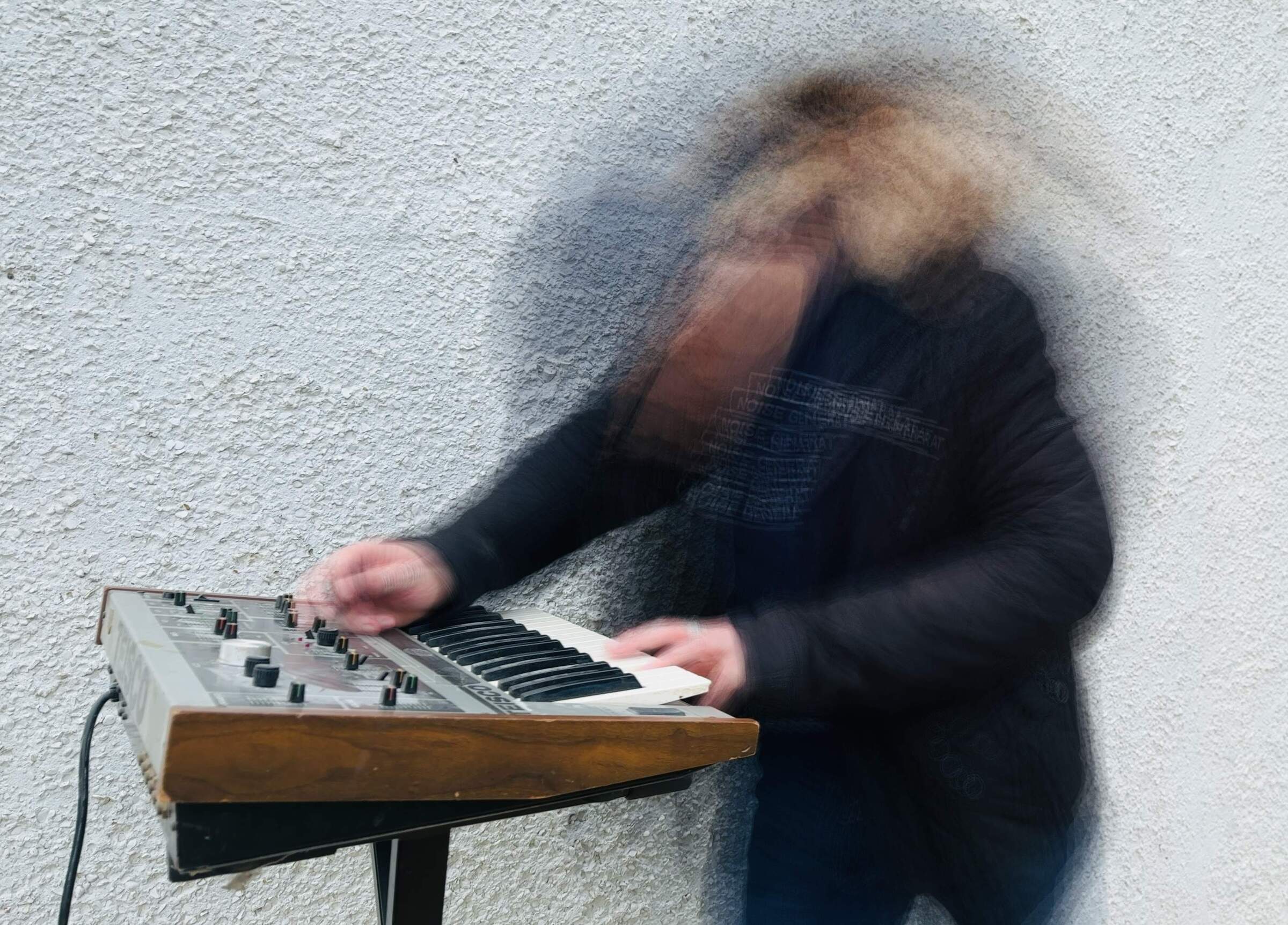The Scenics | Interview | “New Part In Town”
The Scenics, pioneers of Canadian proto-punk, crafted a sonic landscape rich in diversity, blending art punk, garage rock, psychedelia, and pop into a tapestry of sound reminiscent of John Cale, punctuated by avant-garde jazz influences.
Don’t miss the upcoming Supreme Echo release of ‘New Part In Town,’ set for May 6, 2024. The album will feature 10 tracks, including 8 previously unreleased recordings, meticulously remastered from the original analog tapes (all the songs are from 1976, but a couple of them have shown up elsewhere, in other versions).
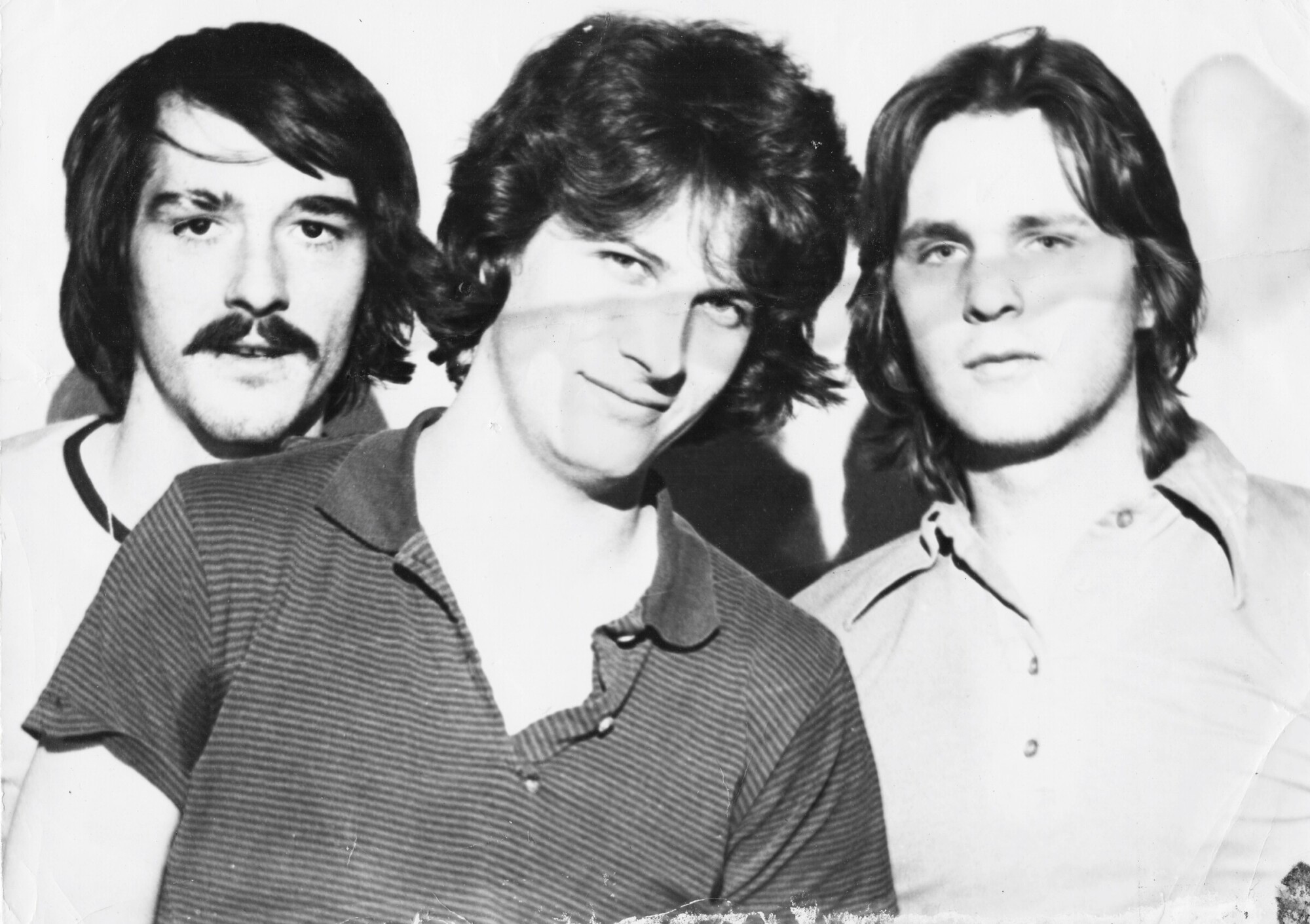
This limited edition release of 500 copies includes an 8-page booklet containing the band’s story, artwork, and photos, along with a sticker. Additionally, the album is available for digital pre-order on Bandcamp, offering 4 tracks for immediate streaming or high-quality download in MP3, FLAC, and more, with the full album accessible upon release.
It’s Psychedelic Baby is very pleased to premiere the teaser video for ‘New Part In Town’. Here it is!
“New Part In Town is the very earliest Scenics you are ever going to hear”
Can you take us back to this new album and the beginnings of The Scenics in 1976? What inspired you to form the band, and what were your earliest influences?
Andy Meyers: I had just gotten out of high school. I had no interest in going to university, and not much interest in working either. For some reason, I had a strong feeling that something had to happen musically. So I wrote up a sign and stuck it up in Toronto’s biggest music store. I literally wrote, “Are you tired of being in bands that aren’t doing anything exciting? Do you want to do something new?” I knew that something had to happen, but I had no idea what! Ken was the only one who answered my ad, and he knew what it was. He was heavily into the Velvet Underground, Syd Barrett, Big Star, etc., but crucially, also picking up on stuff that was just beginning to surface—Pere Ubu’s first singles. Television’s ‘Little Johnny Jewel’. The first Modern Lovers album. He had found New York Rocker and Trouser Press magazines, and they were filling him in. Our point in common in the new stuff was that I had picked up Patti Smith’s ‘Horses’ LP after hearing ‘Kimberly’ on the radio. We both were at Patti’s first show at Massey Hall in November 1975.
After Ken and I connected, there were 4 months of playing regularly together before we found Mike Cusheon on drums. We recorded the material on ‘New Part In Town’ in our basement as soon as Mike was integrated and we had a sound going. So ‘New Part In Town’ is the very earliest Scenics you are ever going to hear, and we are very happy that Supreme Echo is releasing it!
Ken Badger: I was on the rebound from a negative musical experience wherein I had sacrificed a big chunk of integrity in an attempt to support myself playing music. I had been writing all the while though and decided that playing my songs and the music which had inspired me was the correct direction in which to proceed. I answered Andy’s ad and the Scenics were birthed.
Main band was the Velvet Underground. There were a bunch of other influences but the Velvets were the drug. We were one of the bands that bought the album and took the ride.
Andy Meyers: Then, my next wave of musical education came from Ken when we started the Scenics. Beyond the bands I mentioned above, a wide range of music—the Move, Sparks, garage rock, the Dolls… all of this added up to a way of looking at rock’n roll that certainly related to Bowie and where he came from. So it all made sense.
Can you describe the creative atmosphere of the first wave of NYC bands that influenced The Scenics, such as Talking Heads, Television, and Patti Smith?
Ken: The first piece from NYC that made me feel the Scenics were part of the conversation was the Television Ork 45 ‘Little Johnny Jewel’. It was affirmation. It was what I imagined it to be before I heard it and even better when I did.
Your sound has been described as a blend of various elements, including Television’s guitar work, Big Star’s pop sensibilities, and Pere Ubu’s experimentation. How did you navigate these influences to create your own unique sound?
Andy: When the first wave of New York bands started appearing, they all sounded so different, but they all had a couple of things in common. Their sounds were all so idiosyncratic and personal, and none of them were coming from the mainstream. Thousands of bands all tried to copy the Ramones—but when the Ramones first arrived, they were stunningly original. And, Ramones aside, when you saw pictures of most of these bands, they didn’t look like punks, often didn’t look like rock and rollers—they just looked like urban artists.
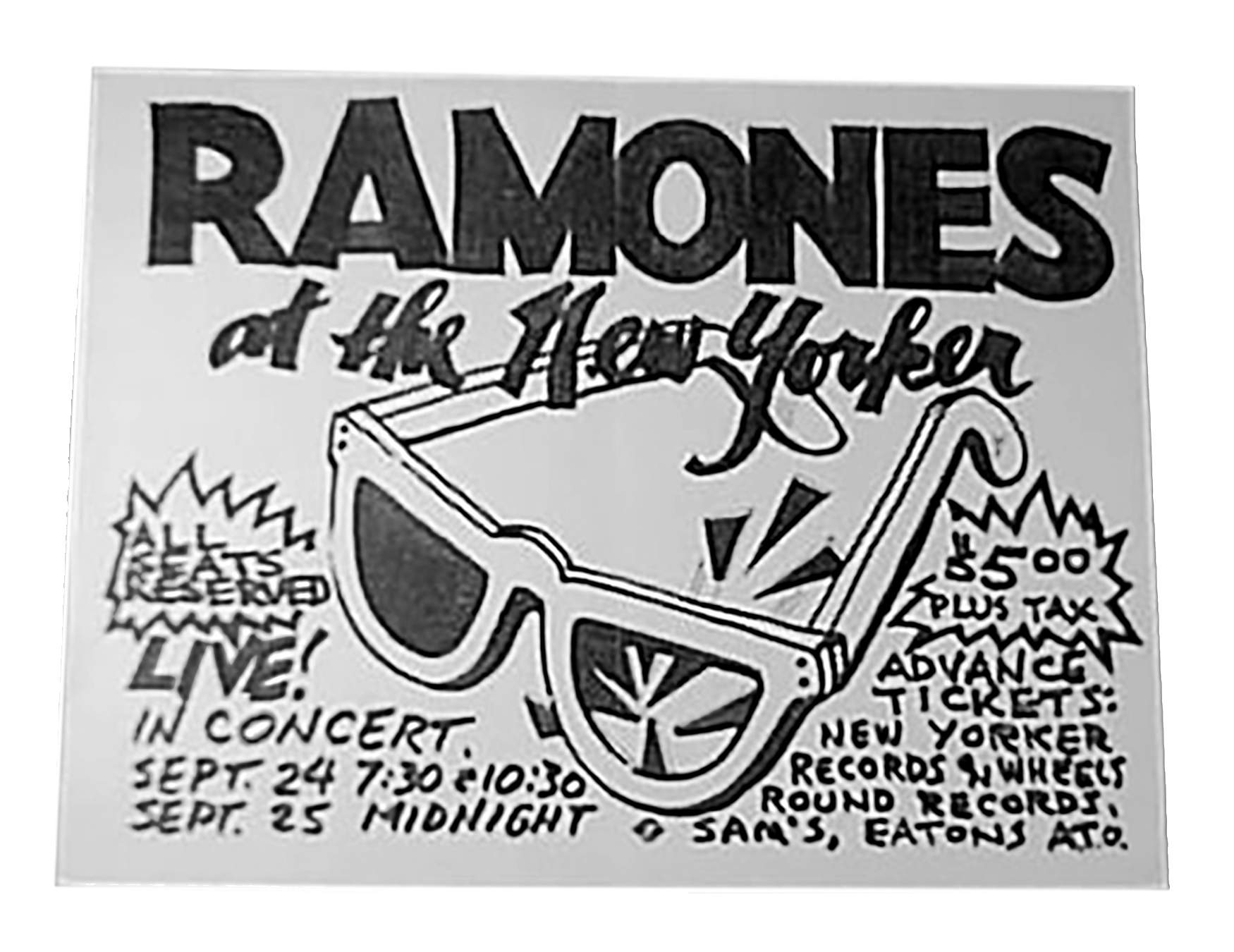
So as we began developing our sound, what we took from these artists was just—”be yourself and mean it!” We had so many influences, and our natural response was to blend them with our own creativity. Duke Ellington and the Band were both huge for me because of their ability to create incredible sound worlds and play together at a really high level. So I just brought that interest in sound and arrangement to the urban folk-rock noise we were making. Ken and I both happened to not be very interested in following musical rules. We both wanted to put stuff together in ways that surprised us and sounded fresh.
The other thing is that at the time all those New York punk bands were just starting out. Patti Smith wasn’t this respected and beloved shaman crone that we know now; she was this wild spinning dervish… who knew which direction she would go? When we began playing, we had never heard Talking Heads… just read about them in New York Rocker and Punk Magazine. Their attitude and style were inspiring… but their sound was a mystery.
Television wasn’t the band that had made the legendary ‘Marquee Moon’ LP and then disappeared for years soon after. “Television” was just the name on the label of a raw and immediate-sounding Orc Records 45. (As an aside, I still much prefer ‘Little Johnny Jewel’ to ‘Marquee Moon’. I remember how disappointed I was when ‘Marquee Moon’ came out. I thought, “oh… they’re just doing rock songs.” I did learn to love it over time.) So in 1976, it wasn’t that we were trying to imitate any of these bands. They were finding out who they were at the same time we were finding out who we were.
Ken and I both being songwriters also made it easier to forge our own thing. There was a potent, always-changing blend going on in our basement. Ken would bring in a brilliant song. I’d hear it and think, “Jeez… I really have to come up with something GOOD to match this!” So it’s not like we had to look far afield for inspiration.
Ken: No navigation required. This ship is steering itself.
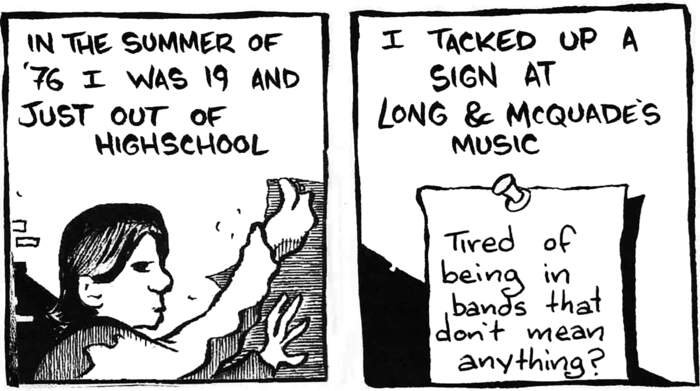
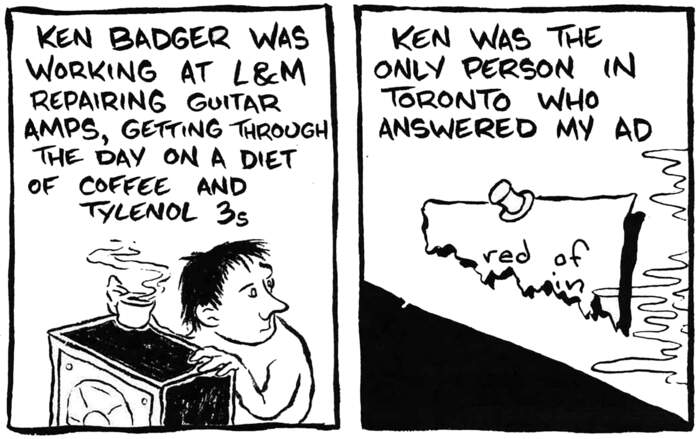
Would you like to share about your upbringing? Where did you all grow up? Tell us about daily life back in your teenage years.
Andy: I was born in midtown Toronto. We moved to St. Louis for my grades four and five, and then back to Toronto, out in the suburbs. Teenage life was school, music (both band and stage band in school, and being in a rock band after school). Some of the first gigs I went to were Neil Young’s ‘Time Fades Away’ tour and ELP’s first album tour with Flower Travellin’ Band (and several others) opening. Dylan with the Band in 74 and then ‘Rolling Thunder’ the next year. I read Creem and Rolling Stone, had a Tele and a Traynor amp, a pile of albums on the floor, and a record player. I was writing songs from 14 or 15 on. (Actually, I began writing songs in grade 2 or 3. But I didn’t start holding on to them until my teen years.)
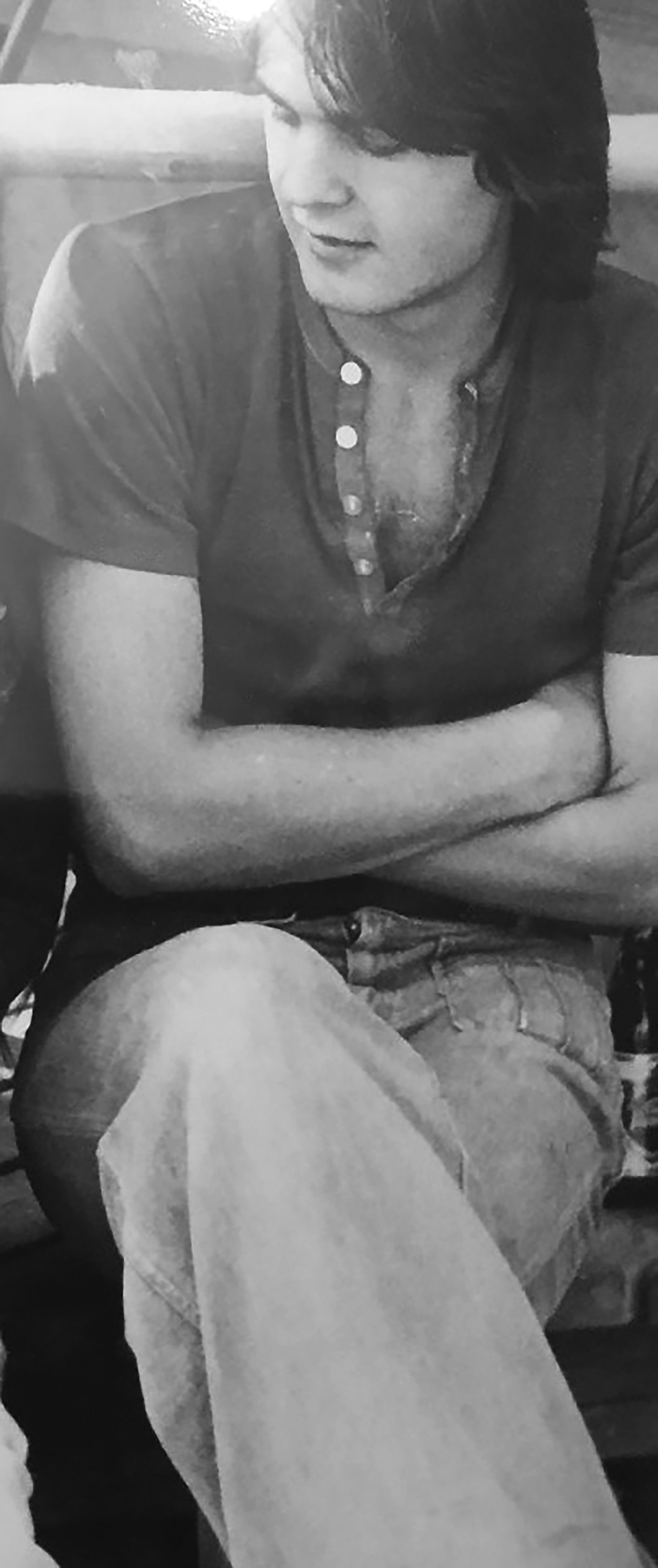
I grew up in a house where there was a lot of music. From my Dad, I learned to love Duke Ellington and appreciate Ian and Sylvia, Gordon Lightfoot, singer-songwriters. I have two older sisters, and I glued myself to the records they brought into our household. ‘Magical Mystery Tour,’ ‘Exile on Main Street,’ Jefferson Airplane’s ‘Crown of Creation’ was another huge one for me. I borrowed all the Dylan albums from my older sister. The Band. Neil Young and Joni Mitchell.
Our local public library in suburban Toronto had an incredible record section. Whoever was doing their buying was incredibly hip: I was checking out Jamaican dub LPs in 1971 and 72. That was when they were new releases! As well, they had a huge jazz section. Eric Dolphy, Lenny Breau, Jim Hall, and Charlie Mingus were some of my favorites. ‘Ziggy Stardust’ was the album that showed me you could do something really personal and idiosyncratic with Rock. Something that didn’t come from the Blues or Folk Rock world. I became a huge Bowie fan. These artists are all still in my pantheon.
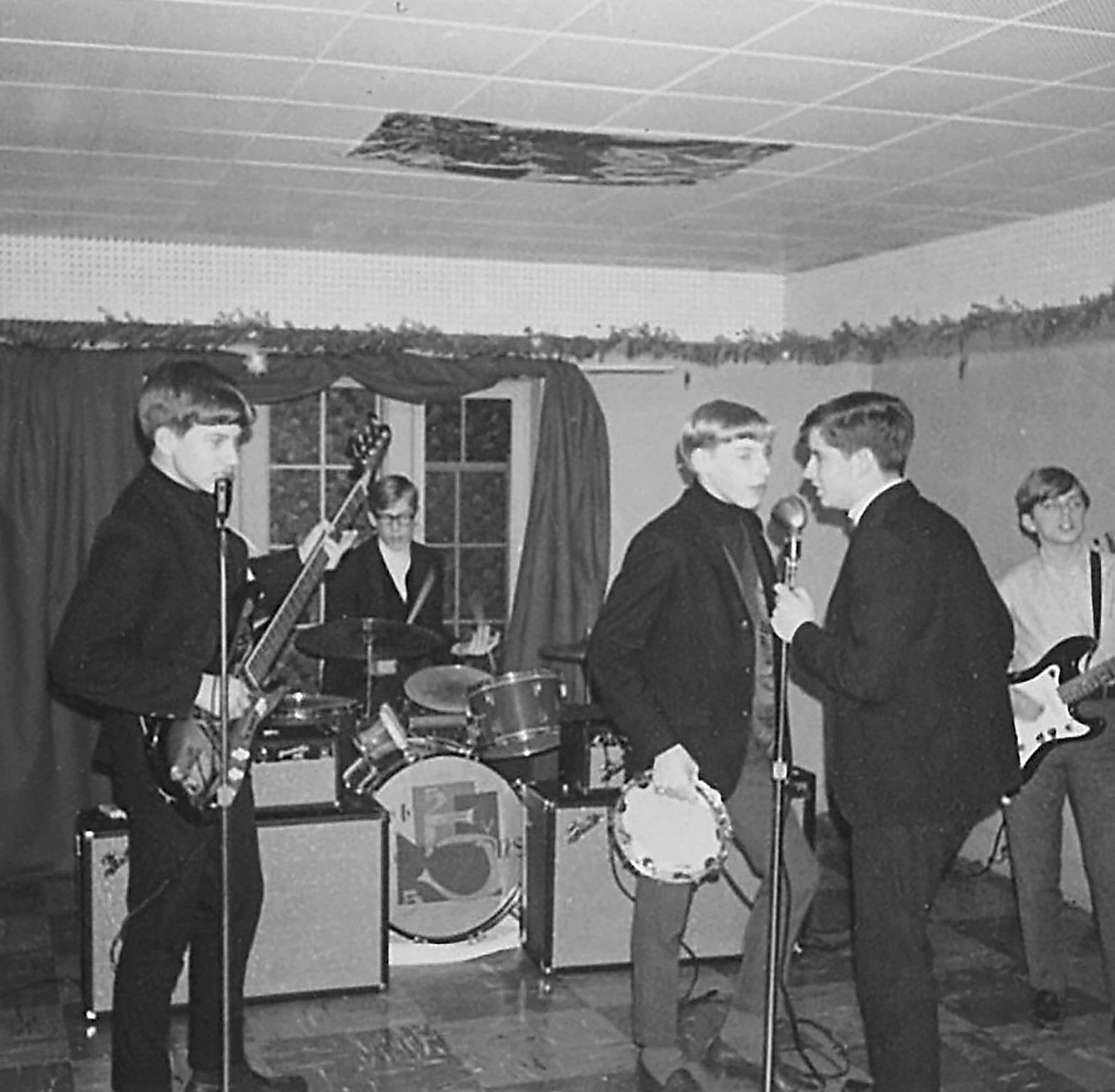
Ken: My father got me started. Classical music, pretty much. In my early teen years (’64 to ’66), I was in a band called the Mercenaries. This was in Detroit. In my later teen years, I had one ear to the radio and one hand in my girlfriend’s pants. Romance trumped music for a while. Later, it became obvious that music and romance were natural bedfellows. My family emigrated to Canada in 1971.
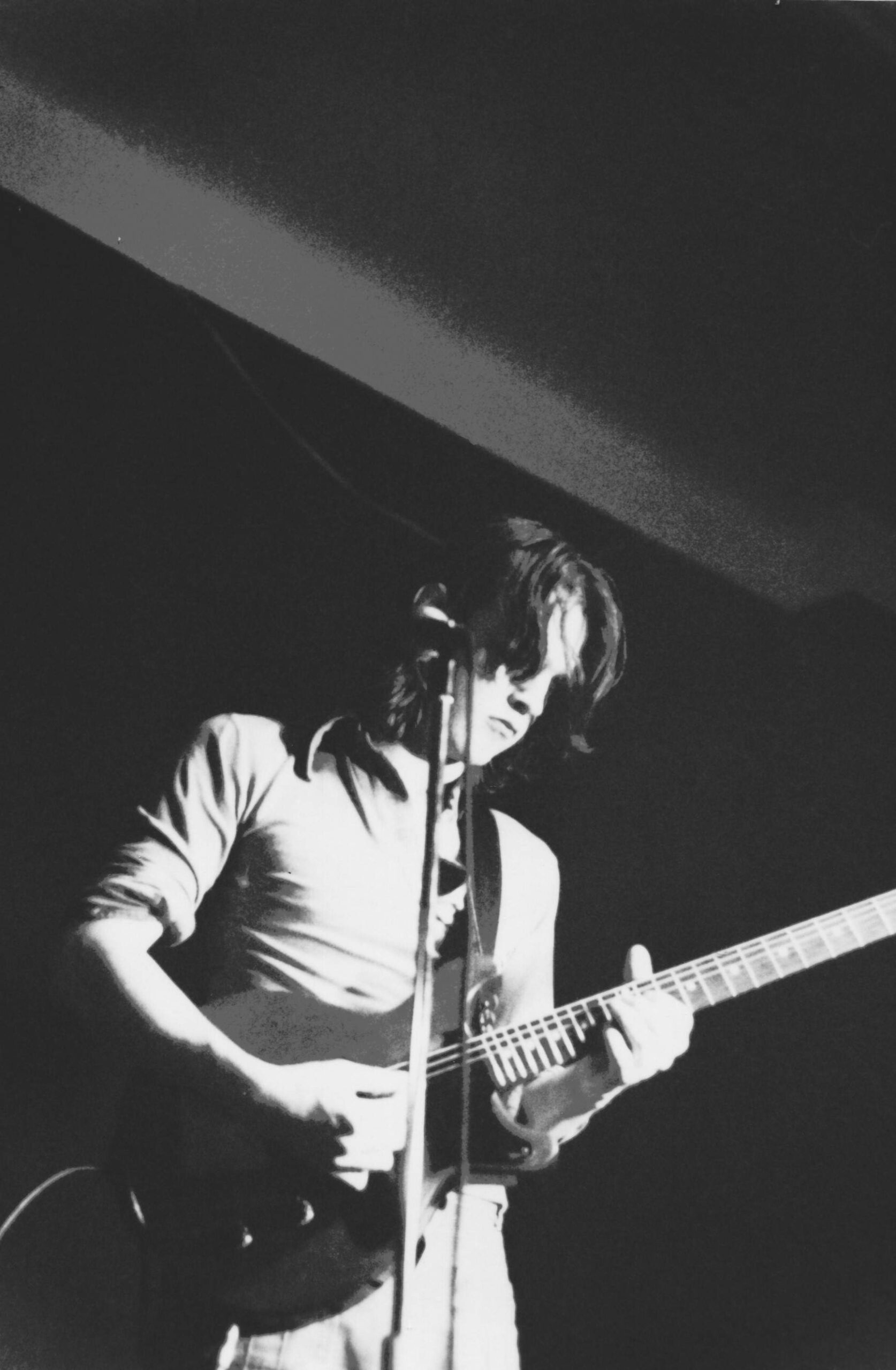
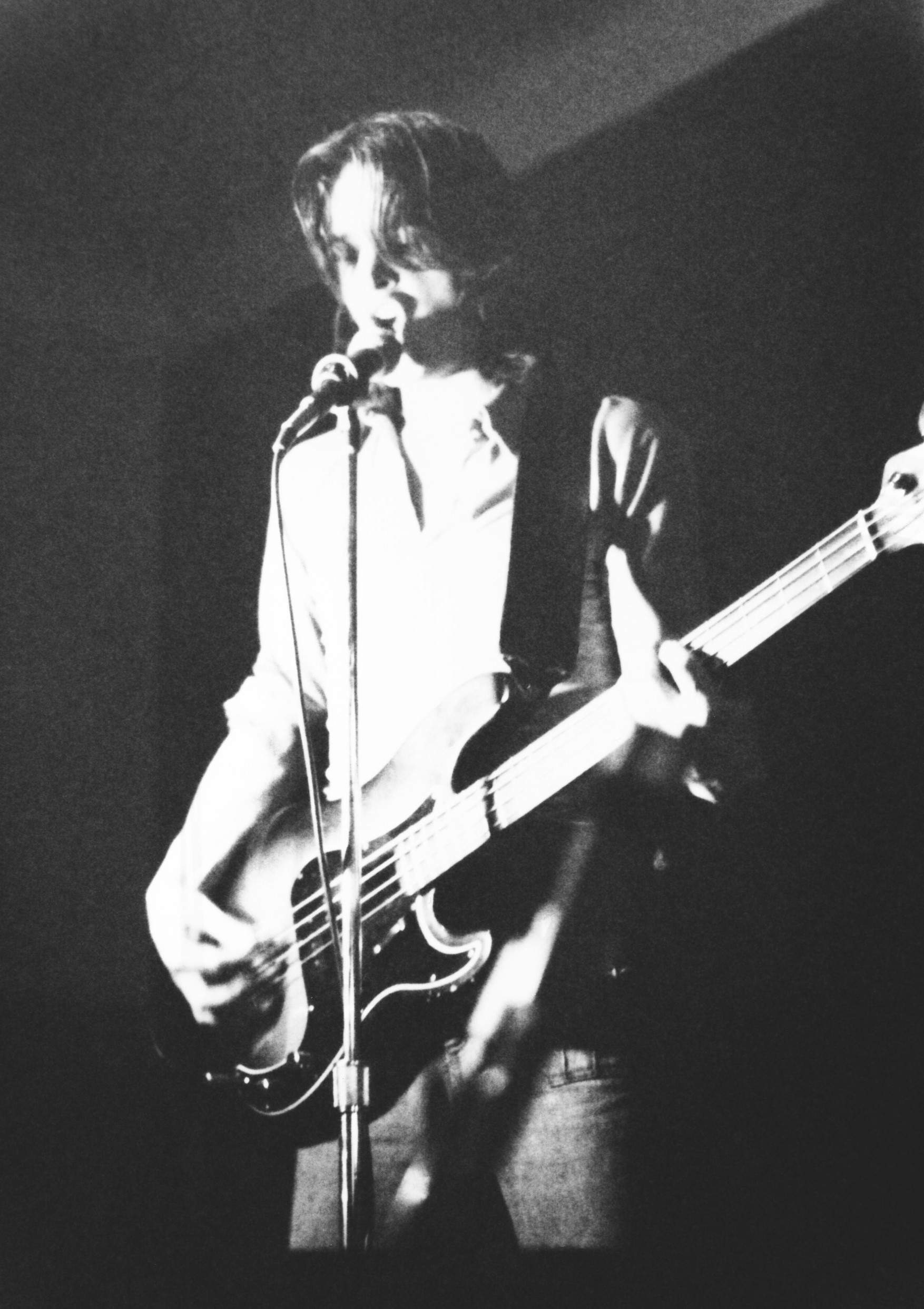
Your studio recordings from 1977/78 were released in 2015. What was the recording process like for these tracks, and how do you feel about them finally being heard by a wider audience after all these years?
Andy: It’s felt super satisfying for people to hear all those songs that sat on a tape in a box for close to 40 years! We’re getting close to selling 1000 copies of that In The Summer LP, as well as CDs and digital downloads… so, yes, it feels good to know that people are enjoying those tracks.
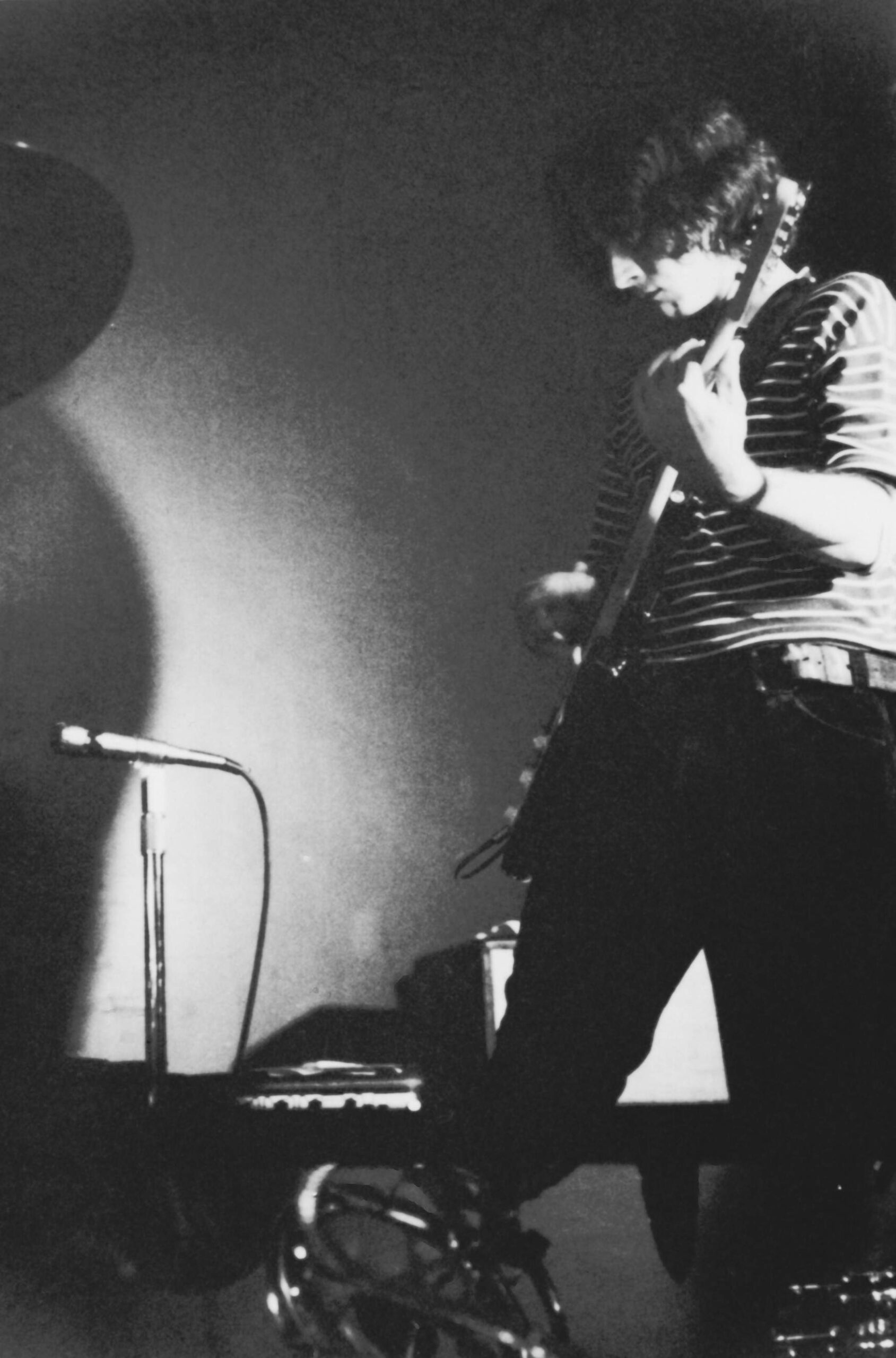
Ken: We had very little money and no producer. We did 2 sessions in ’77 in a garage converted to a 4-track studio and 1 session in ’78 in a small 8-track studio. Because we had very little money, all the arrangements and overdubs were already rehearsed and ready to be recorded.
The 4-track sessions were pretty exciting. The band itself was new, and all the songs just came pouring out pretty much fully formed. The 8-track session was a little darker. We had been hand-to-mouth for a while and not really getting anywhere, but it did yield the title track for In the Summer. Towards the end of the 8-track sessions, Keith Elshaw, a local DJ, joined us in the studio to help mix and master.
It is always gratifying when you receive positive feedback for something you have created.
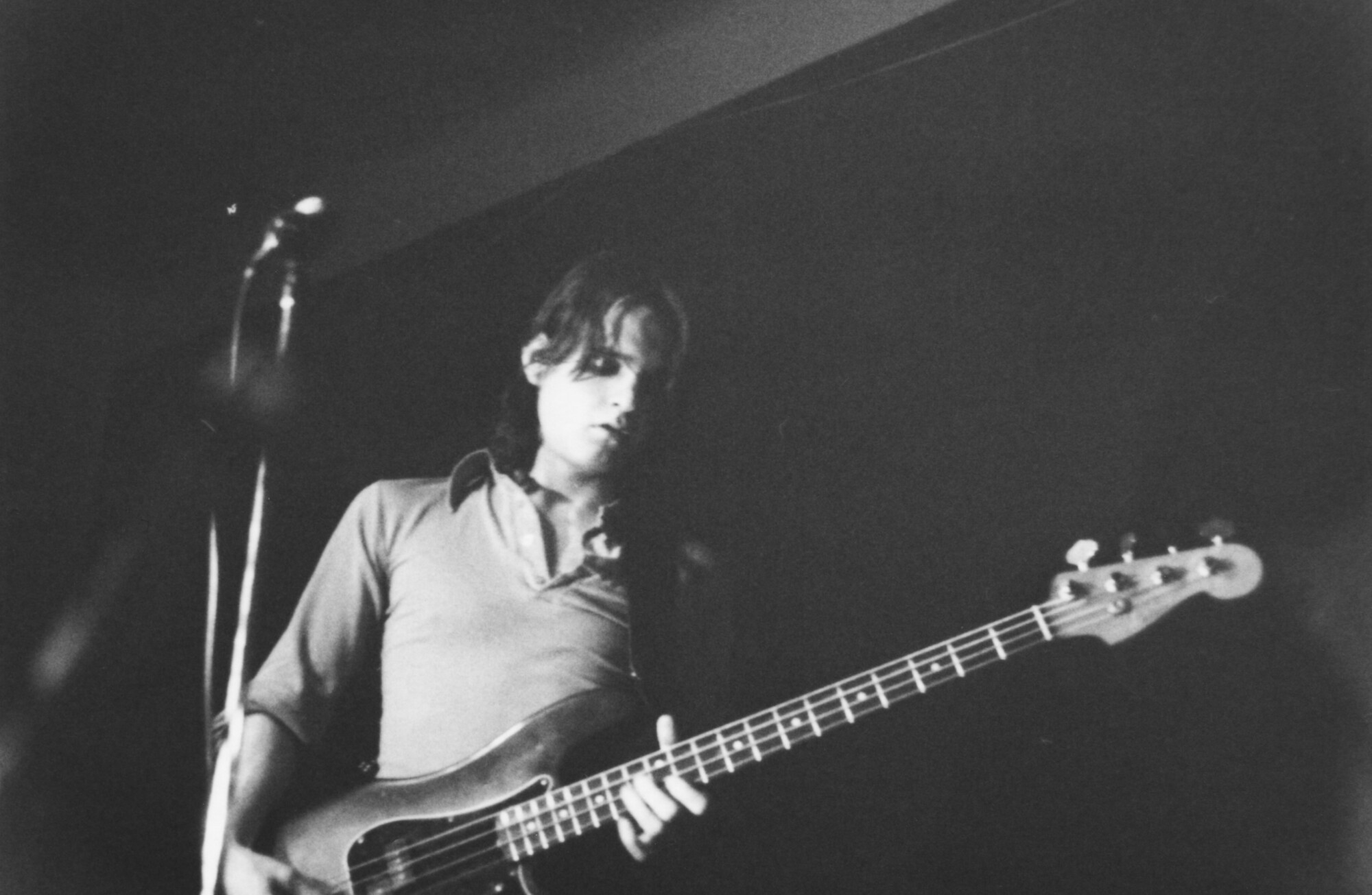
Tell us about Bomb Records and the release of ‘Underneath The Door’. What do you recall from working on the album?
Andy: Making it was interesting… first time in an 8-track studio. We worked with an engineer who ended up working with the Rolling Stones and… everybody, basically! It was recorded during our craziest period… so musically, it was a wild ride. That album is badly in need of remastering… we plan on doing that and getting it out to people.
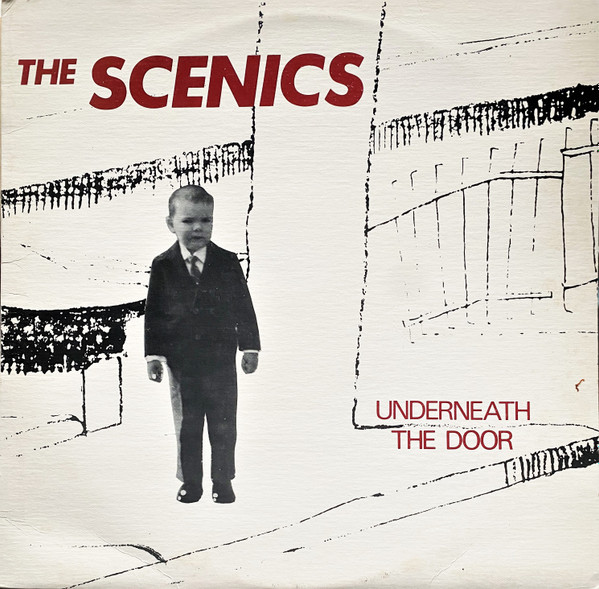
Ken: Keith Elshaw was able to get us a contract with this new label Bomb Records. The label was owned by a German, Wolfgang Smegg, who had apparently come into some money and was busy signing various Canadian artists. Keith booked 2 weeks at another 8-track studio in the spring of ’79. The schedule was pretty tight, and we had to work pretty fast. In hindsight, I can hear that happening on the album. A lot of the songs we were recording had been recorded on our demos, and we were perhaps overly familiar with them. The tempos were really fast on some songs.
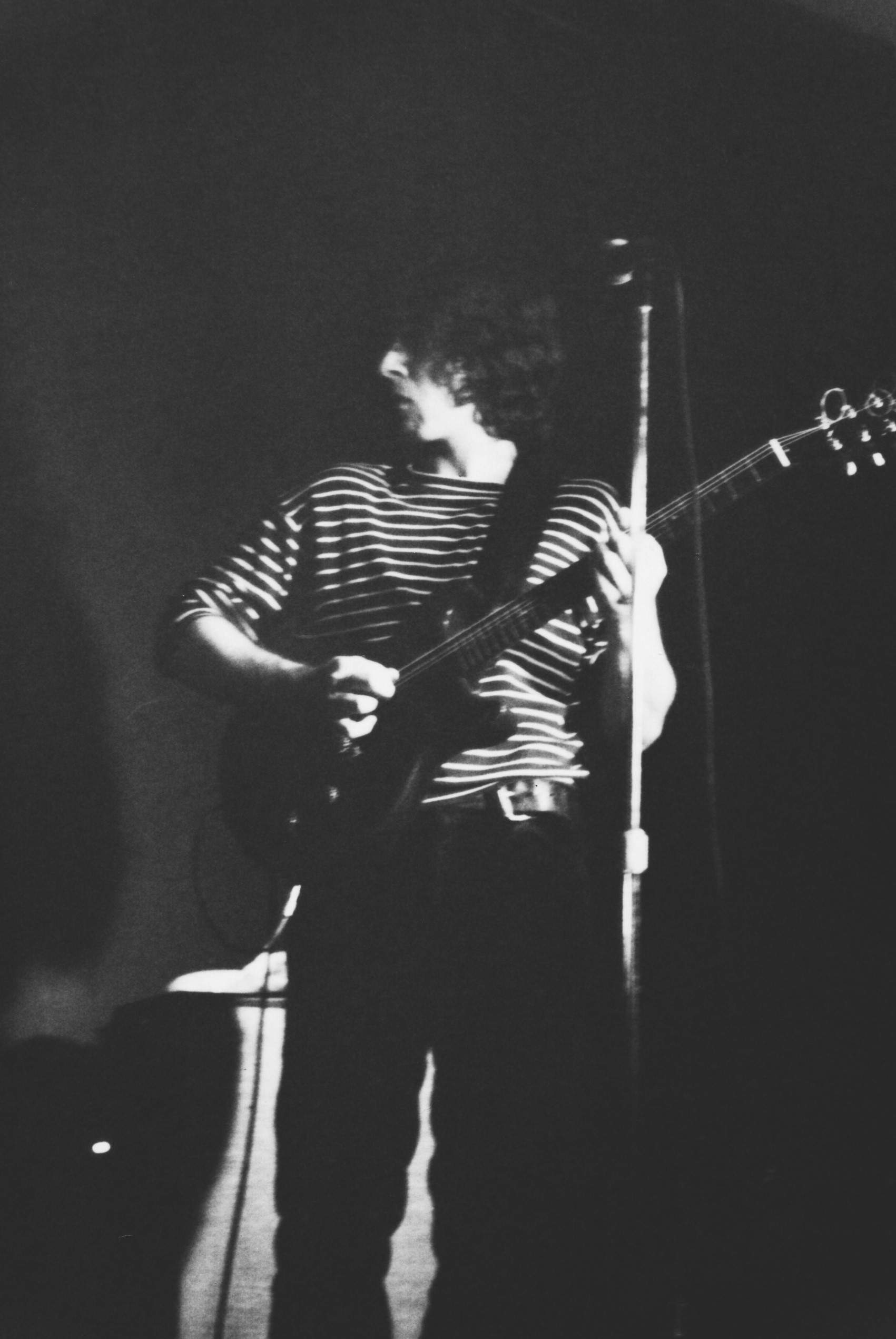
What would be the craziest gig?
Andy: The craziest gig was the Last Pogo in 1978. Six or seven bands on the bill in a club that was filled way beyond the legal limit. It ended with Teenage Head getting shut down by the cops, which caused everyone to trash the club! It was all caught on the Last Pogo film from 1979. (Which we released on DVD about 15 years ago.)
Ken: Most were pretty crazy, so I’ll go with the strangest triple bill. We opened for the Viletones and the Troggs at the Horseshoe in ’78. We were on first, then The Viletones, a punk band whose singer, a chap who used to go by the stage name Nazi Dog, would do his nastiest best in an effort to piss people off. Then came the magnificent Reg Presley and the Troggs. We shared the dressing room, and I have this vivid memory of Reg overflowing his speedo underwear mingling with his female admirers. A mind-bending musical assemblage that I am sure Gary Topp conjured.
“A band named the Scenics were pretty much outliers in the Toronto music scene”
Was there a certain scene you were part of, maybe you had some favorite hangout places? Did you attend a lot of gigs back then?
Andy: The Punk Scene in Toronto was very exciting. There were a ton of strong local bands, including Simply Saucer, The Government, The Viletones, Crash Kills Five, The Curse, etc. As well, there were a couple of promoters, Gary Topp and Gary Cormier (“The Garys”), who brought in a highly eclectic group of killer acts. John Cale, Nico, Sun Ra, Teenage Jesus and The Jerks, Anthony Braxton, John Renbourn, The Cramps, Pharoah Sanders, Fred Frith/Chris Cutler, etc. Add in shows like Art Ensemble of Chicago, Leonard Cohen, Joni Mitchell, The Clash, Captain Beefheart, and Neil’s ‘Rust Never Sleeps’ show and, really, it was just one blazing night of music after another. I must have seen the original lineup of Pere Ubu seven or eight times. Saw Alex Chilton with a band for two nights in ’79. First night sounded like Big Star, second night was a shambles.
Ken: It was ironic in that context that a band named the Scenics were pretty much outliers in the Toronto music “scene”. The irony was intentional. We weren’t punk or art college, but the punk and art college clubs were where we could play.
In Toronto in the 70s, the cultural charge was led by Gary Topp and Gary Cormier. Two promoters who would only book artists they were interested in. The acts they put on stage were those that you would probably not have a chance to experience if not for the Garys. The Garys and the Scenics had very similar taste in music. They leased the Horseshoe Tavern in downtown Toronto and later moved to Edgerton’s (the Edge), which was also downtown after they were booted from the Horseshoe. For the full sense of public outrage at their forced exit from the Horseshoe, see the short film ‘the Last Pogo’ by filmmaker and friend Colin Brunton.
The Horseshoe and the Edge were the venues that the Scenics frequented most often.
The Scenics are deeply indebted to Gary Topp for providing us “the opportunity,” inspiration, and a place to play.
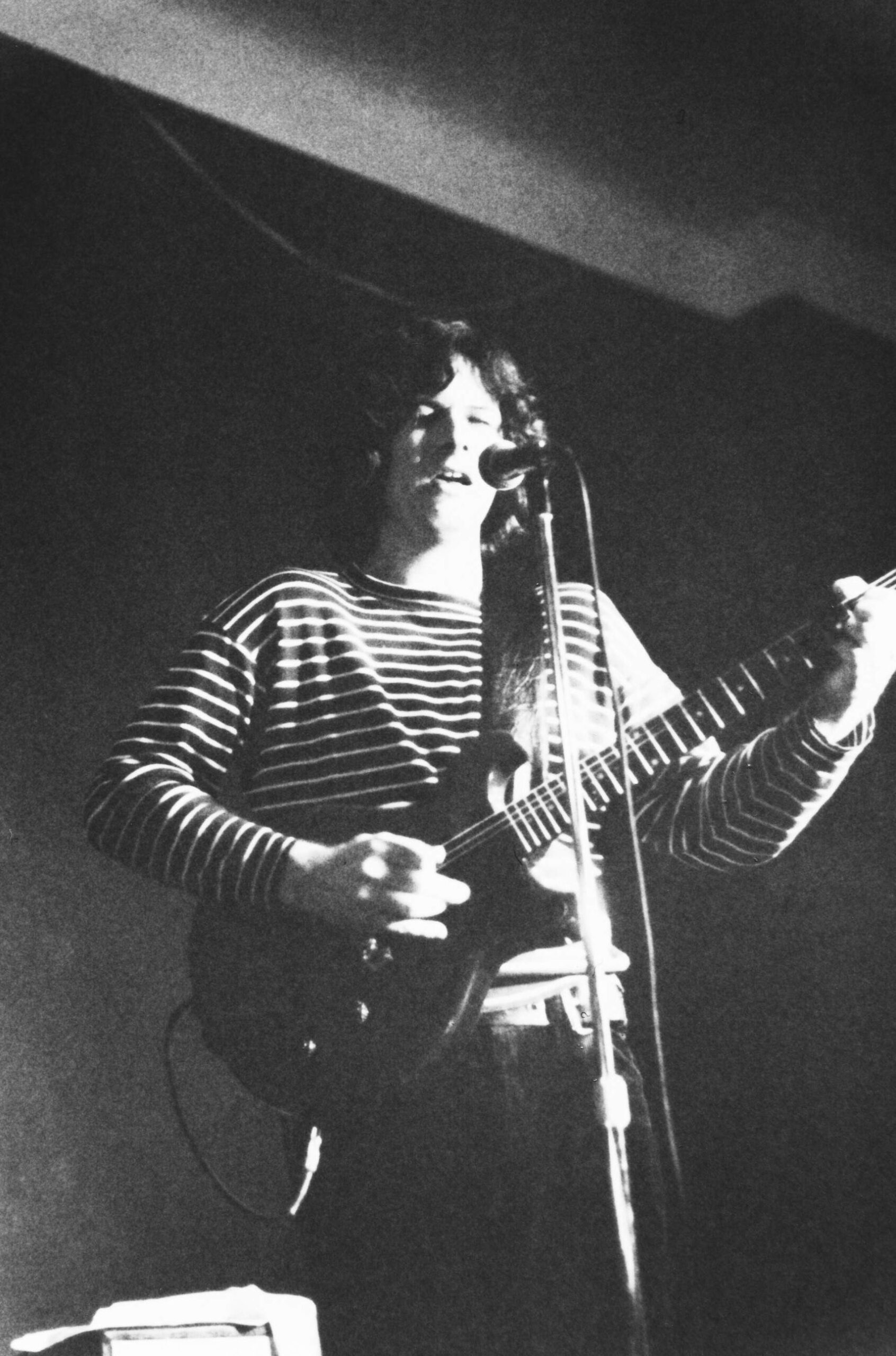
If we were to step into your teenage room, what kind of records, fanzines, posters, et cetera would we find there?
Ken: Creem, Trouser Press, NY Rocker, Punk, Who Put the Bomp, etc. Too many records to mention.
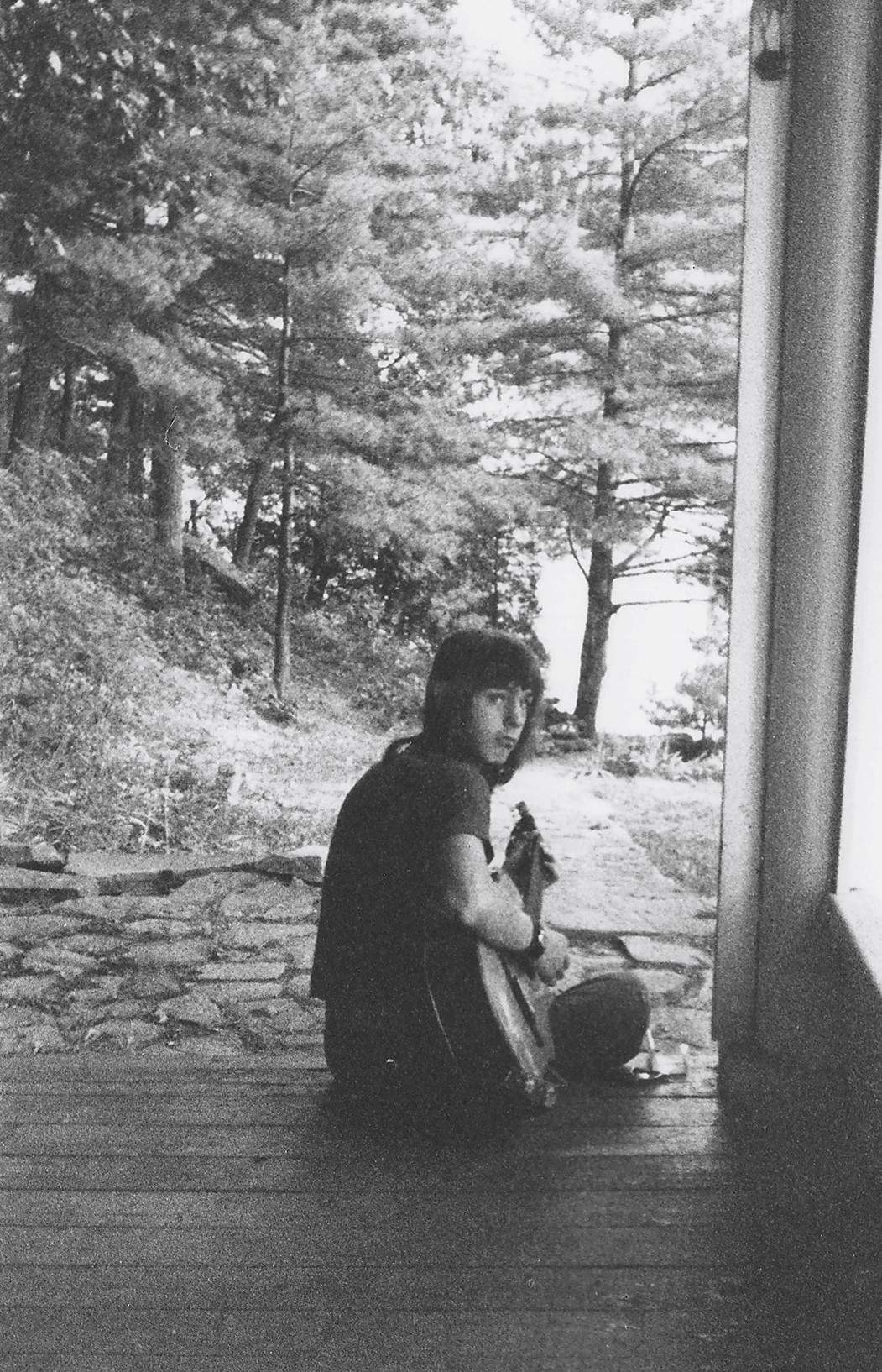
After reuniting in 2008, what motivated you to release new material like ‘Dead Man Walks Down Bayview’ in 2012, and what has the reception been like?
Andy: We recorded new material because in 2008 we were once again touring and playing dates. Playing together again, with vintage members from the 70s– Mike Young on bass and Mark Perkell on drums. So we were, of course, writing new material and revisiting songs from the Scenics’ first era. We’d always had regular visits into the recording studio, so it was time to get some fresh stuff down.
Reception to the ‘Dead Man Walks Down Bayview’ album was really strong. The Scenics always play in the moment, just being who we are NOW… so, that LP sounded like the Scenics! I’m very proud of it–you can check it out here.
I’m pretty excited about what we are doing now. Releasing ‘New Part In Town,’ the nascent sounds of the Scenics, is a thrill. We are already starting to work on a 1977 album, and are planning a series of Scenics Annual releases, 1978, 1979, 1980, and 81, covering our first run as a band. All those years we had a tape machine going in our basement and at gigs. We have over 300 hours of tape! So… the full story of the Scenics has always been lying in waiting. We are thrilled to finally be telling it, in annual LPs and additional tracks released digitally.
This ‘New Part In Town’ LP includes a booklet with an 8000-word essay about 1976 and the Scenics’ earliest punk days. Punks before there was punk. Each of the following albums will continue to fill in the blanks and tell all our misadventures.
Ken: Mark, Mike, and I all live in Ontario. Andy lives 3000 miles away on the west coast. Gary Topp and Colin Brunton were putting together a Last Pogo reunion show (there is a film of this also ‘The Last Pogo Jumps Again’) 30 years after the original. We all wanted to do it. We thought if Andy was going to make the trip we should make the most of it and booked recording time while he was in Toronto.
Critical reception for ‘Dead Man’ was very favorable.
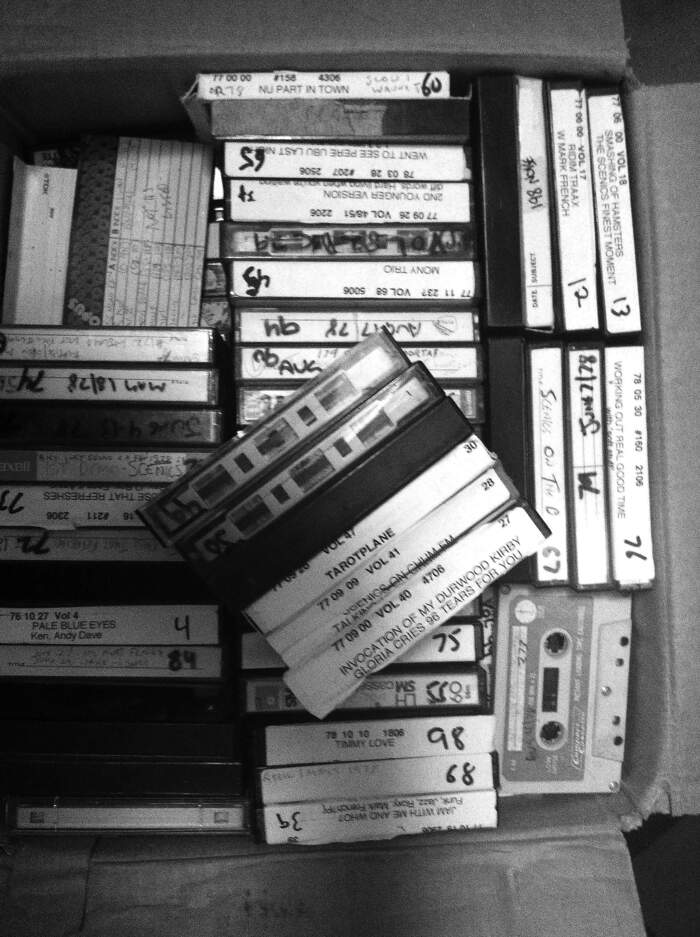
Looking back, what was the highlight of your time in the band? Which songs are you most proud of? Where and when was your most memorable gig?
Andy: With Ken and I each being full-time songwriters for the band (we wrote separately, so that’s two steady streams of new material), as well as both of us loving to take cover songs and completely reimagine them Scenics style, there are TONS of unreleased songs. Our trips to the studio every year or so covered just a fraction of the material we were proud of. There are so many unheard songs– ‘Sinning,’ ‘Whining Lite,’ ‘Pierce Arrow Shirt,’ ‘Best Vacations,’ ‘Western Heels,’ ‘World Around Me,’ ‘Timmy Takes A Bath,’ to name just a few. Proud of all those tunes, and dozens more, can’t wait to finally share them!
In September 1977, we did a show opening for Talking Heads in Toronto. It was on the day that Talking Heads 77 was released, and it also happened to be the day that Marc Bolan drove his roadster into a tree and died.
For decades between the end of our first run in 1982 and our rebirth in 2007, if someone asked about the band, the simplest way to paint a picture of it all was to say “I was in a band that opened for Talking Heads in 1977.” For decades, that had to suffice. Since the ‘In The Summer’ LP, the ‘Last Pogo’ DVD, etc., we’ve been able to color in more of the story, and are continuing to do so.
Ken: Oh….so many highlights. The amazing blow-your-mind stuff that happened in our basement rehearsal space on a regular basis. The shows that we did at the Blue Boot in London, Ontario, with the Demics. Our last show ever in October 2016 in Cleveland.
We were prolific. I am proud of most of our songs. Some absolute gems that you’ll probably never hear.
Many memorable shows. One that stands out for me for me was the show we did in 1980 at a place called the Head Space in Larry’s Hideaway, a club cum hooker hotel. Larry’s is long since demolished. We did a Velvets cover ‘I Heard Her Call My Name’. Andy turned his guitar into a weapon and vaporized the minds of all those that were there.
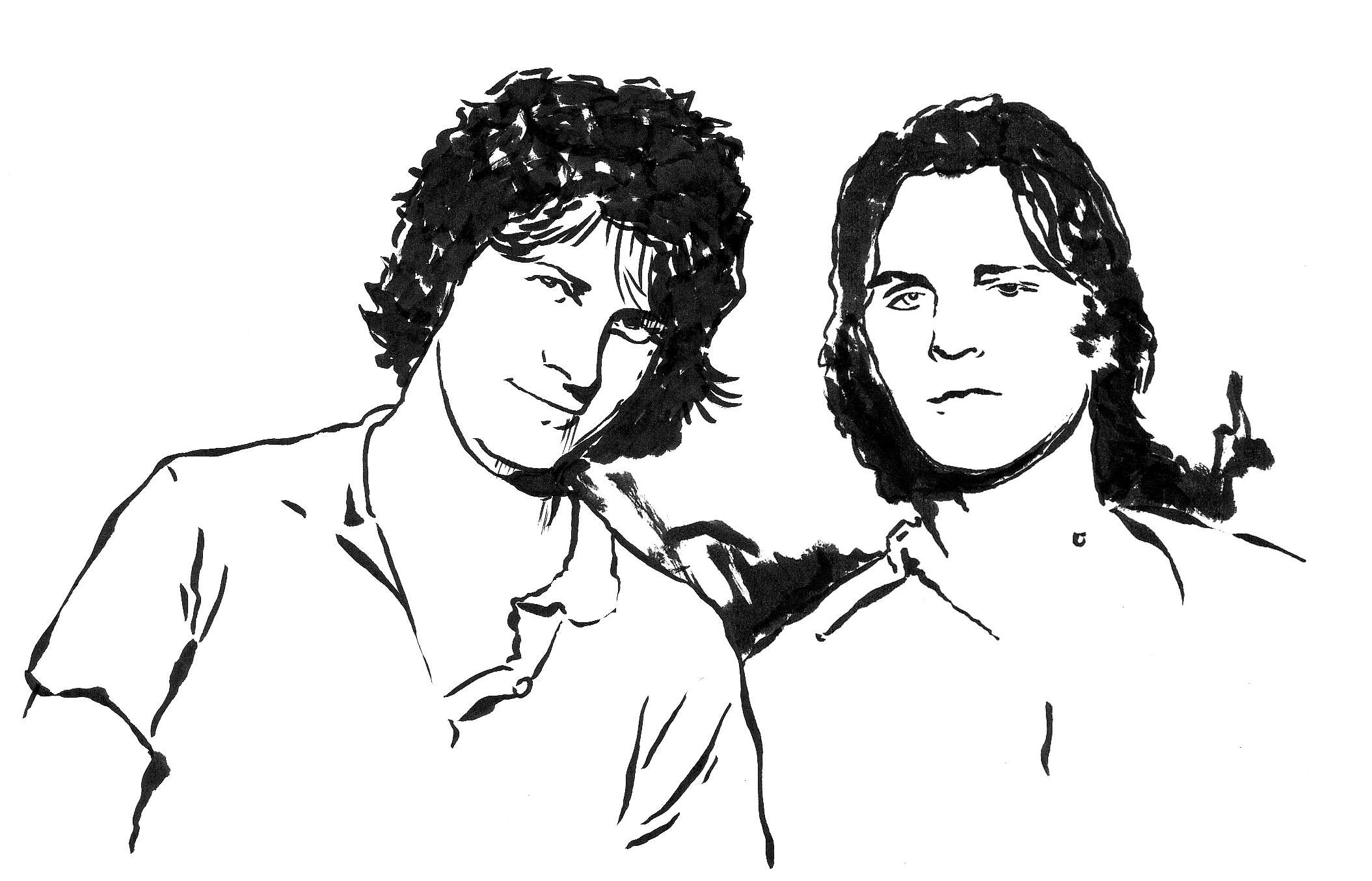
What currently occupies your life?
Andy: My wife and kids and I left Toronto in 1988. We moved to a small island off the west coast of Canada- just offshore from Vancouver. We have a rural home there. As well as the unending stream of carpentry, etc., that the various buildings on our property need, I have a recording studio (www.allowedsound.com). I play and record a variety of musics (I just picked up a stand-up bass!) Likewise, I record a variety of artists. A lot of it is improv and experimental. Here’s a Scenics-related project– an album backing up Brian Brett, an amazing spoken word artist, with music created from samples pulled from 1970s Scenics cassettes! (more here). Susheela Dawne was the third artist involved– writing songs and adding her evocative vocals.
A focus has been remastering “field recordings” a la the ‘New Part In Town’ LP. I love the architectural dig aspect… you find something half buried in the dirt, clean it off, polish it, restore it, and suddenly it’s an amazing, glittering artifact. You can hear the life in it. As well as ‘New Part In Town,’ I mastered an LP of Sonny Vincent recordings from the early 80s (half live, half studio.) I also recently mixed and mastered a 1978 Toronto show by the incredible Contortions (original lineup!!!) that is going to be an LP from Superior Viaduct. That one was a challenge as I drew it from both a soundboard tape and an audience tape from a machine with batteries that were running down…. so the tape was speeding up as the show went on! I had to synchronize to the soundboard tape, pull the best elements from both. One of the most stunning shows I ever saw, and I’m very happy with how the recording turned out. Can’t wait to hear the LP.
So, anyway, that’s a type of recording work I’m focusing on. Pulling together the recordings from our library for the 1977 Scenics album, and starting to hear from folks around the globe who have archival recordings that need to be brought into focus.
Ken: I’m still writing and recording. I do my best to stay physically and mentally in the musical moment.
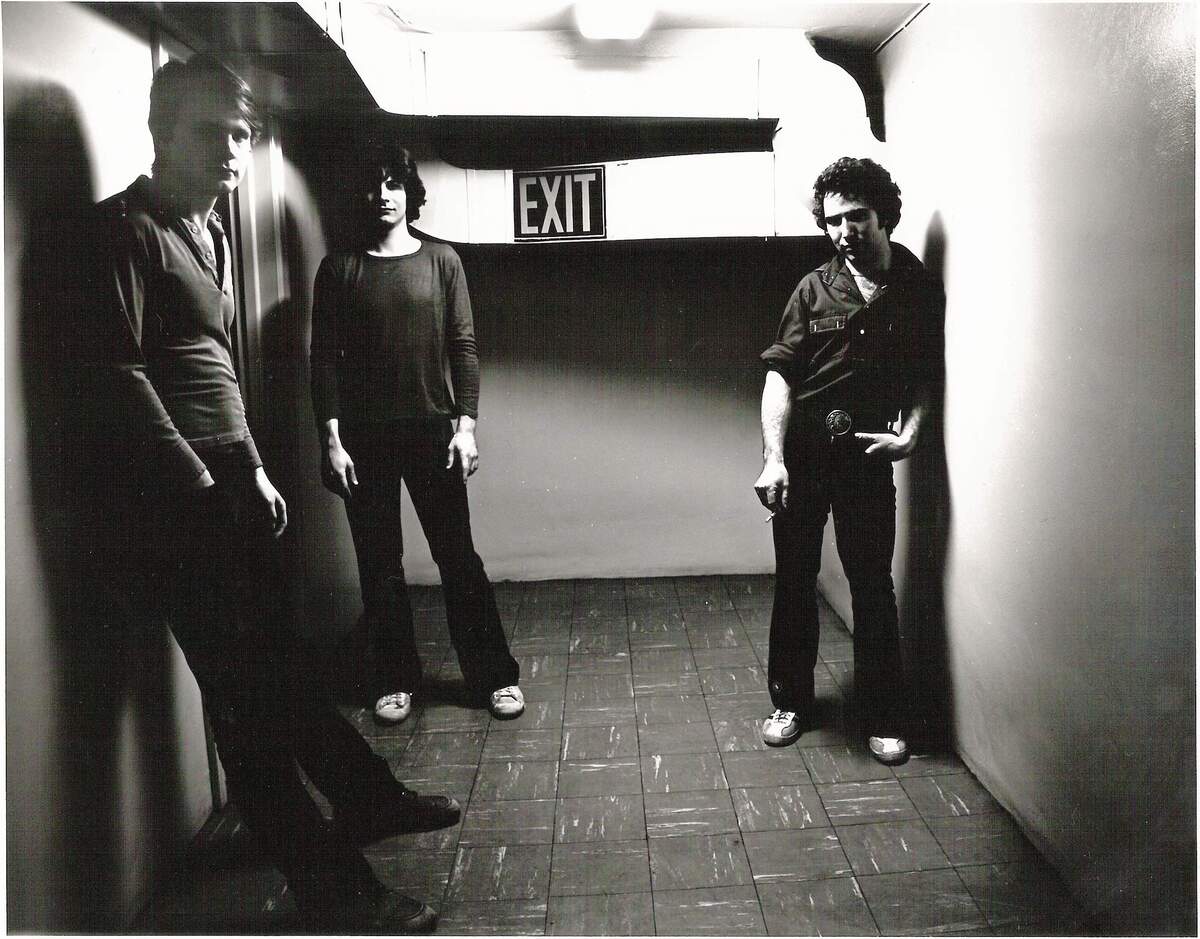
Thank you for taking your time. Last word is yours.
Andy: Thanks for taking the time Klemen… been a pleasure to do this with you!
Ken: The live Velvets cover I mentioned above is on a CD called ‘How Does It Feel To Be Loved the Scenics Play the Velvet Underground’. Buy it if you can find it.
Klemen Breznikar
The Scenics Facebook
Supreme Echo Facebook / Instagram / Bigcartel / Bandcamp

